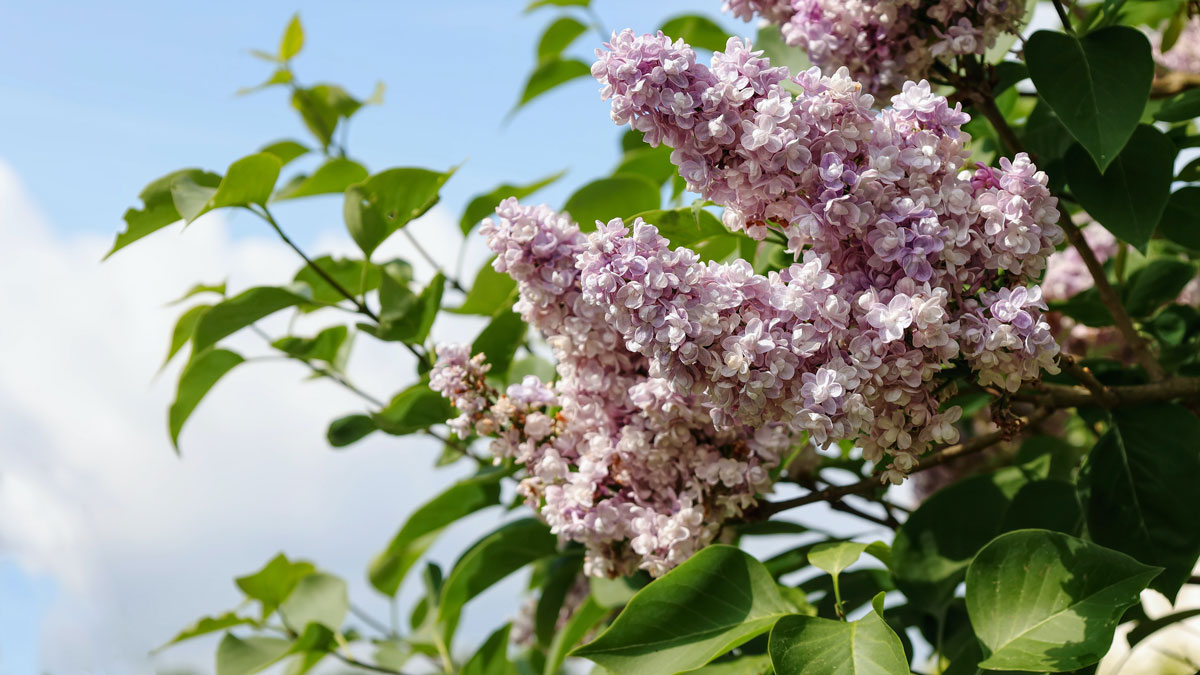A translation of this article was made possible by a partnership with Planeteando. Una traducción de este artículo fue posible gracias a una asociación con Planeteando.
Stretching 3,531 kilometers over a wide range of landscapes, the Appalachian Trail in the eastern United States teems with life, especially when winter turns to spring. That annual transition is springing quite a bit earlier now than it has in past years, scientists have found, documenting a slow, but steady, change that has altered the annual rhythms of many of the trail’s ecosystems.
The findings rely on phenology, the science of tracking the timing of natural events. Phenologists have found abundant physical evidence that climate change is affecting Earth’s annual cycles, such as when butterflies first take flight and when leaves take on autumnal hues. One such cycle is the appearance of lustrous new leaves each spring, a process known as “green-up.”
“Even though temperatures have been going up since the 1950s, [temperature changes] have to be high enough to trigger green-up,” said geographer Claire Jantz of Shippensburg University in Pennsylvania, who led the new study and will present the results on 15 December at AGU’s Fall Meeting 2022. This research was collected as part of a larger project by the Natural Resource Condition Assessment, a program of the National Parks Service.
To examine when leaves emerged in springtime, Jantz and her colleagues captured the imprints of green-up using data from Moderate Resolution Imaging Spectroradiometer (MODIS) instruments aboard NASA’s Terra and Aqua satellites. They also looked at data modeled from crowdsourced observations of the first spring leaves of lilac and honeysuckle shrubs, which were submitted by participants to the USA National Phenology Network (USA-NPN). Additionally, the team examined weather trends, such as temperature and precipitation, and matched those with the trail locations in the study.
The MODIS instruments take images of the planet’s entire surface every 1 to 2 days in many spectral bands. Each image has a resolution of about 500 meters per cell. The research team aggregated these cells into watersheds along the Appalachian Trail and tracked the timing of the first green-up events each year from 2000 to 2018.
Although ultraviolet light is invisible to us, “to satellites and other instruments, it’s really bright.”
In particular, the MODIS sensors can track ultraviolet light, which is reflected from leaves. Although ultraviolet light is invisible to us, “to satellites and other instruments, it’s really bright,” said Jantz.
The emergence of new leaves during spring is almost like a light switching on. Suddenly, a blanket of ultraviolet light is reflected from the ground, easily spotted by the satellite sensors, Jantz explained.
Leafy Heralds of Spring
The satellite data revealed that spring is arriving much earlier along the northern parts of the Appalachian Trail: from 6 to 18 days earlier on average. “The northern part of the study area is much more greatly affected by increasing temperatures than the central and southern part,” Jantz said. Similarly, USA-NPN data revealed green growth emerged earliest in watersheds clustered within the New England–Acadian forests in New York and the Appalachian and Blue Ridge forests in Virginia and West Virginia, the team found.
Their data align with water and temperature records from those regions, which revealed warmer and wetter springs, Jantz said.
Combining phenology data with temperature and weather records has created a fuller picture of how climate change is affecting the Appalachian Trail, said Nicholas Fisichelli, president and CEO of the Schoodic Institute at Acadia National Park in Maine. (The Appalachian Trail does not pass through Acadia National Park but has its northern U.S. terminus in central Maine.) “We can understand a lot about how the status and trends are changing across the full corridor,” which includes not only temperate forests but wetlands and alpine ecosystems, said Fisichelli, who was not involved in the study.
Although New Englanders often lament the lack of springtime weather, a lengthening of the springtime climate isn’t really a positive development, Jantz noted. “There are a lot of potential cascading ecosystem changes that could come along with the changes in phenology that we’re seeing,” she said. For instance, an earlier green-up changes the hydrologic cycle because trees and shrubs slurp up water earlier in the spring. And if flowers bloom too early, bees and other pollinators in their wintry slumbers might miss their meal stops.
The Appalachian Mountains and the vast range of ecosystems along the trail are key ecological resources for much of the eastern United States, Jantz emphasized: “It’s really critically important for us to continue to protect this network.”
—Kate Hull (@katelisab3th), Science Writer


